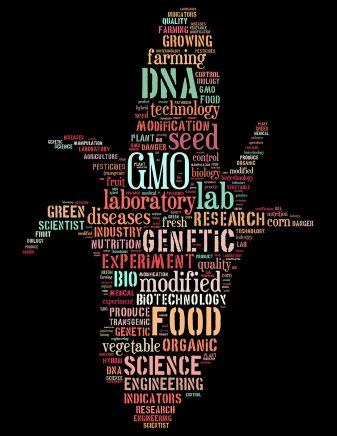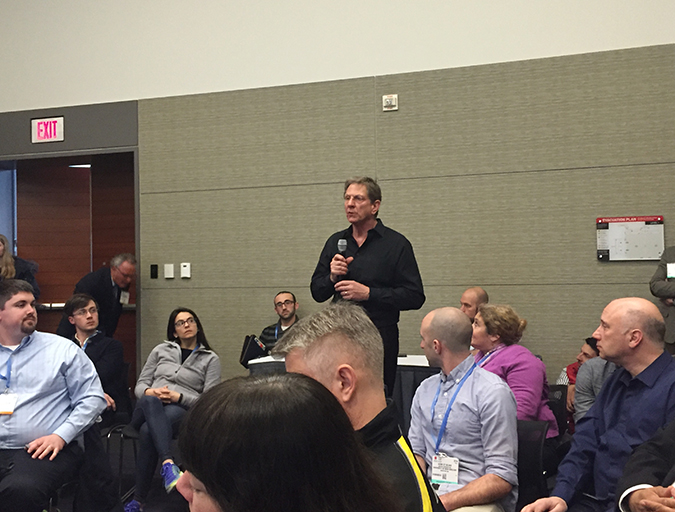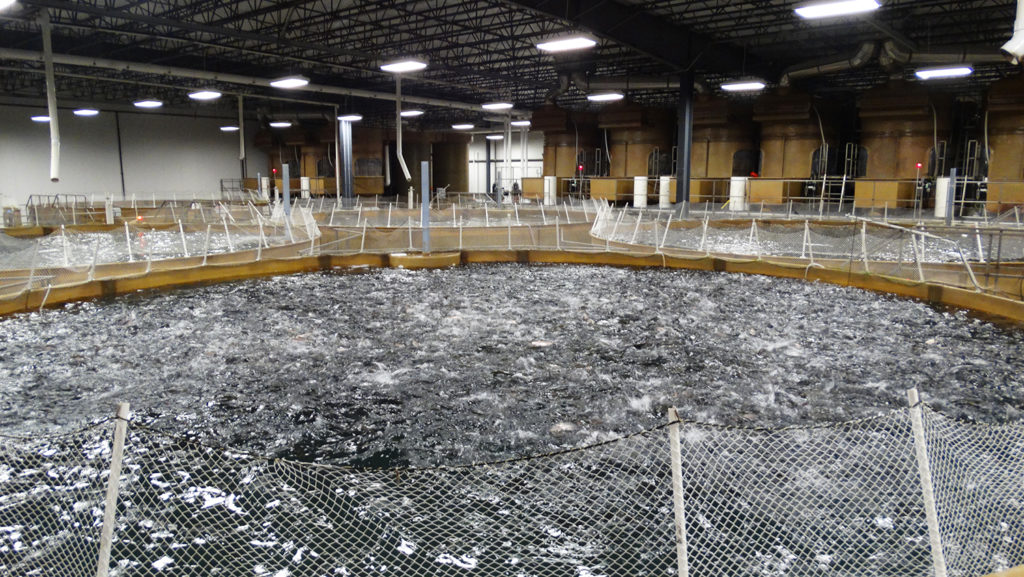Scott Nichols begins series on genetically modified foods with a simple question: What really matters to us?
 Genetic engineering of foods arouses great passion. Those who are either for or against will ardently seek to convince others of the inherent propriety of their viewpoints. The GMO discussion and all the words it has devoured is like a three-act pirouette. It just spins in place, going nowhere endlessly.
Genetic engineering of foods arouses great passion. Those who are either for or against will ardently seek to convince others of the inherent propriety of their viewpoints. The GMO discussion and all the words it has devoured is like a three-act pirouette. It just spins in place, going nowhere endlessly.
Why should that be? We have ample evidence that revisiting the debate’s oft-repeated points isn’t moving us forward – we remain stuck in the same old conversation.
I suggest that addressing two very important topics will allow us to begin to advance. The first is that we must resolve the contentious issue of labeling. Until it is completed and off the table, the table has room for nothing more.
A second hindrance is that much of the attention on genetic modification in agriculture has been devoted to the technology itself rather than outcomes of its use, what truly matters and affects us all. By focusing solely on the technology we’ve been diverted into an endless and unproductive discussion.
Allow me an (admittedly questionable) analogy. Genetic engineering is like a paint brush – it can be used to create a freshly painted kitchen, or it can be dropped into a running Cuisinart in that same kitchen thus creating a broken Cuisinart and making one hell of a mess. One thing is pretty good, the other thing is pretty bad and the paint brush led to both outcomes.
But before we actually start the discussion of outcomes, we must resolve the sidebar debate about labeling, where firm lines have been drawn in the sand.
On the label
Labeling opponents have three major concerns. The first is that regulatory agencies in both the United States and now Canada have determined GM foods are biochemically and nutritionally equivalent to their non-GM counterparts. Because you label ingredients, not processes, no label is needed. This results in the second point; in U.S. law, labels are supposed to be about content. Opponents argue that a GMO label will confound rather than clarify because the content has been judged by the U.S. Food and Drug Administration (FDA) to be the same. The last fear is that labels will be editorial, rather than neutral, thereby dissuading consumers.
If transparency is a goal, then exemptions make absolutely no sense.
The pro-labeling groups say that information about consumer products should be easily available, especially for food. They contend the label should communicate about the contents of the container not merely the content inside the container. Because they deem genetic engineering to be material information about food, genetically engineered food sources should be labeled as such.
From my vantage point, both groups make good arguments.
The point of departure is different for each and, unfortunately, each makes arguments that the other explicitly ignores. So the aforementioned endless and unproductive discussion goes something like this:
For labeling: I really care to know whether genetic engineering was used.
Against labeling: There’s no difference between genetically engineered and non-genetically engineered foods so isn’t important. The seminal point is that they are safe.
For: If it’s safe, why not label it?
Against: Because it’s the same thing so it needs no label.
For: I don’t know if I can trust you if you’re hiding something.
Ad nauseam
This has been going on since the 1990s. We’re stuck in a do-loop and nobody wrote the exit line.
A relatively simple (though not easy) two-part pathway may lead us out of this conundrum. The first part is that we label any product that is itself genetically engineered, contains a genetically engineered ingredient or is made by a genetically engineered component. Such a label must be simple – something along the lines of “Contains genetically engineered organisms or ingredients.” The second part of this is that there are no exemptions. None. Full stop.
The incongruence between companies’ communication styles used in marketing efforts and company rejection of labels because they may not communicate factually is too big to ignore.
Many products are exempt from labeling laws such as that enacted in Vermont and those proposed and defeated in 2014 in Oregon and Washington in 2013. If transparency is a goal, then exemptions make absolutely no sense.
Again, those favoring labeling argue that the processes and history by which foods are made are materially important. This means labeling food products that are GMOs themselves as well as foods made with ingredients isolated from them. By the same logic, food items containing vitamins such as B2, B12 and C, made in genetically engineered microbes, should be labeled as should the daily vitamins and supplements made from them. The same is true for cheeses produced with rennet from genetically engineered microbes; beer or wine made with an engineered yeast; and breads made with processing aids such as transgenic amylase.
Should this be acceptable to the labelling opponents?
In a word – yes. This is because, in part, the opposition of companies to labeling stands on pretty shaky ground. Skimming advertisements in some of the cooking magazines that come to my house makes it apparent: Steadfast adherence to scientific data isn’t at the heart of food producers’ communications to consumers. The incongruence between companies’ communication styles used in marketing efforts and company rejection of labels because they may not communicate factually is too big to ignore.
That being said, companies have legitimate concerns about GMO labels. They don’t want labels to be scarlet letters. Their concern is real as some organizations have stated the hope that labeling will be the engine that drives the practice of genetic engineering itself out of commerce. These are legal products. From a regulatory perspective, they are judged to be safe. If they weren’t they would not be allowed into the marketplace.
Here, however, is the most salient point: It is in companies’ practical interests to get past the labeling brouhaha. Their well-constructed opposition to labeling legislation has largely been successful but at the steep cost of bringing them ill will. Embracing a simple label with language similar to the suggestion above will effectively move us out of the road to nowhere we’re on.
Risks and results
With labeling off the table, other important issues – the outcomes of genetic engineering in agriculture – can be brought to the fore.
In assessing outcomes, it is important first to establish the criteria used to pass judgement. Amongst the many discussants and stakeholders, this hasn’t yet been accomplished and you have to wonder if it is even possible. Ominously, 12 years ago Nobel Laureate Paul Berg spoke to that exact point.
Berg’s lab was the first to make a transgenic organism in the laboratory for which he won the 1980 Nobel prize in chemistry. He was one of the five organizers of the International Congress on Recombinant DNA Molecules. The 1975 meeting, held in Asilomar, Calif., convened scientists, journalists, lawyers, physicians and government officials to examine risks in the very new area of recombinant DNA research. The Asilomar conference is almost revered for the deliberative process it used to identify risks and their magnitudes and then propose the steps to mitigate them. Writing on the Nobel website, he contrasted Asilomar to the present, saying:
By contrast, the issues that challenge us today are qualitatively different. They are often beset with economic self-interest and increasingly by nearly irreconcilable ethical and religious conflicts and challenges to deeply held social values. An Asilomar type conference trying to contend with such contentious views is, I believe, doomed to acrimony and policy stagnation, neither of which advances the cause of finding a solution. There are many forums for airing opposing views but emerging with an agreed upon solution from such an exercise is elusive and discouraging.
Berg’s prescient, sobering and discouraging thought describes our current circumstance. Perhaps, however, he left us a bit of wiggle room. Maybe there is the possibility that an approach other than using “many forums for airing opposing views” will open the door to a more productive conversation.
To begin that new conversation we start well by first asking: How do properly think about genetic engineering in agriculture? This is an enormous task. If it can be accomplished, we have a chance at success when we dive into discussions about the specific outcomes of genetic engineering in agriculture – those with us now, those that may occur in the future and those we want to occur in the future.
Author
-

Scott Nichols
Scott Nichols is the founder of Food’s Future, LLC a consultancy that helps clients build new ventures that accelerate the expansion of sustainable aquaculture. He is a regular speaker and writer on the role of aquaculture in our future food supply and is a member of the board of directors at the Aquaculture Stewardship Council.
Tagged With
Related Posts

Innovation & Investment
Aquaculture Exchange: Scott Nichols, Food’s Future
Scott Nichols speaks to the Advocate about the launch of his own consultancy, Food’s Future, about groundbreaking innovations at Verlasso and about the role of aquaculture in a rapidly changing world — one in need of collaboration and new ideas.

Responsibility
Aquaculture Exchange: Alan Shaw, Calysta
Turn fuel into animal food? Calysta can do that. The California biotech company is now hoping for greater buy-in from aquaculture, its target market. CEO Alan Shaw talks about the potential of FeedKind and its ambitious plans for 2016 and beyond.

Intelligence
Boston brainstorm: Getting consumers to embrace aquaculture
In a discussion format somewhat unique to the bustling halls of Seafood Expo North America, aquaculture backers lamented the lackluster U.S. consumer acceptance for farmed fish.

Innovation & Investment
AquaBounty, with new RAS facility, hopes to win public support for GM salmon
Ron Stotish, CEO of AquaBounty Technologies, believes genetically modified salmon is no threat to its opponents and the outlook for AquAdvantage is good. With its purchase of the Bell Fish Co. RAS facility, commercialization will soon commence.

